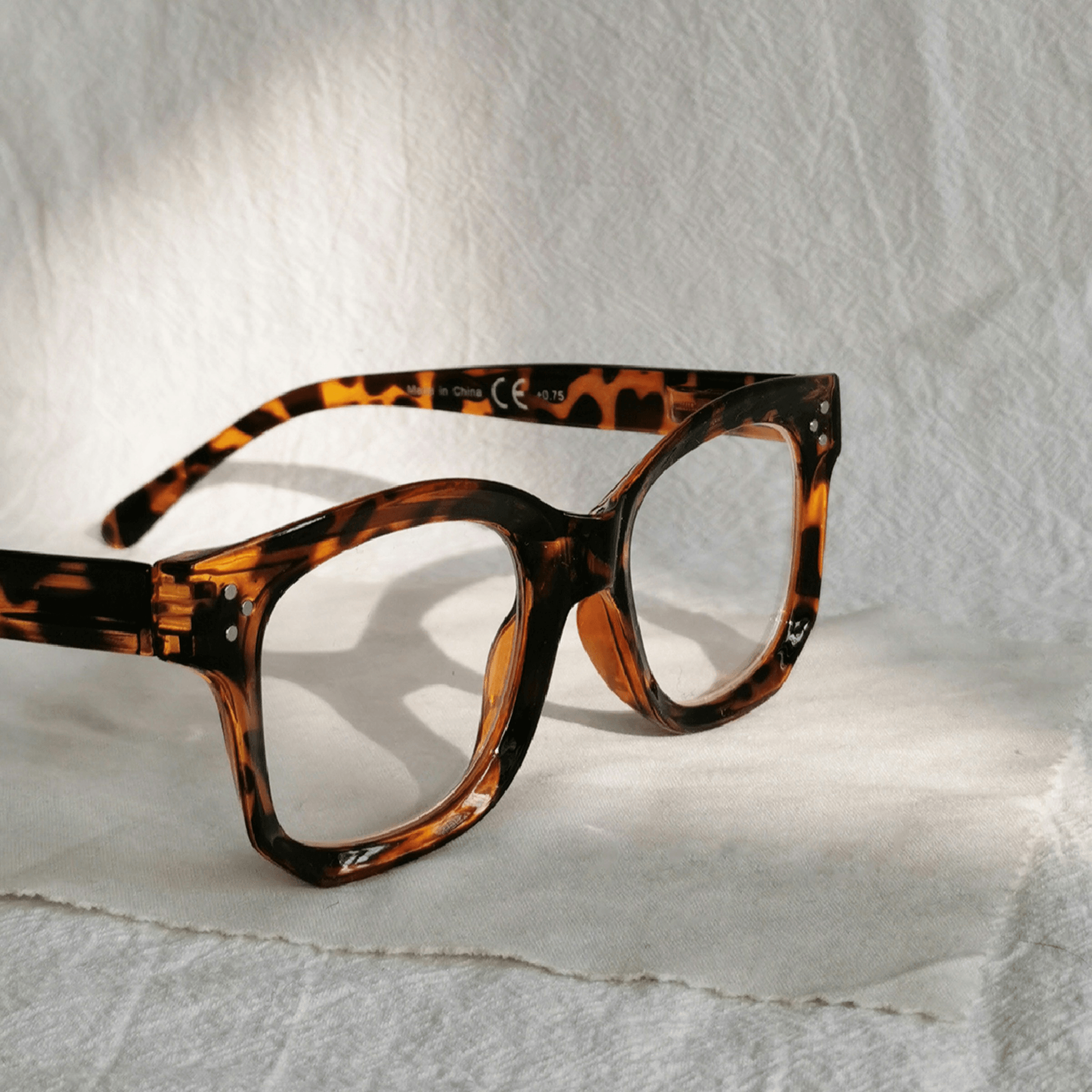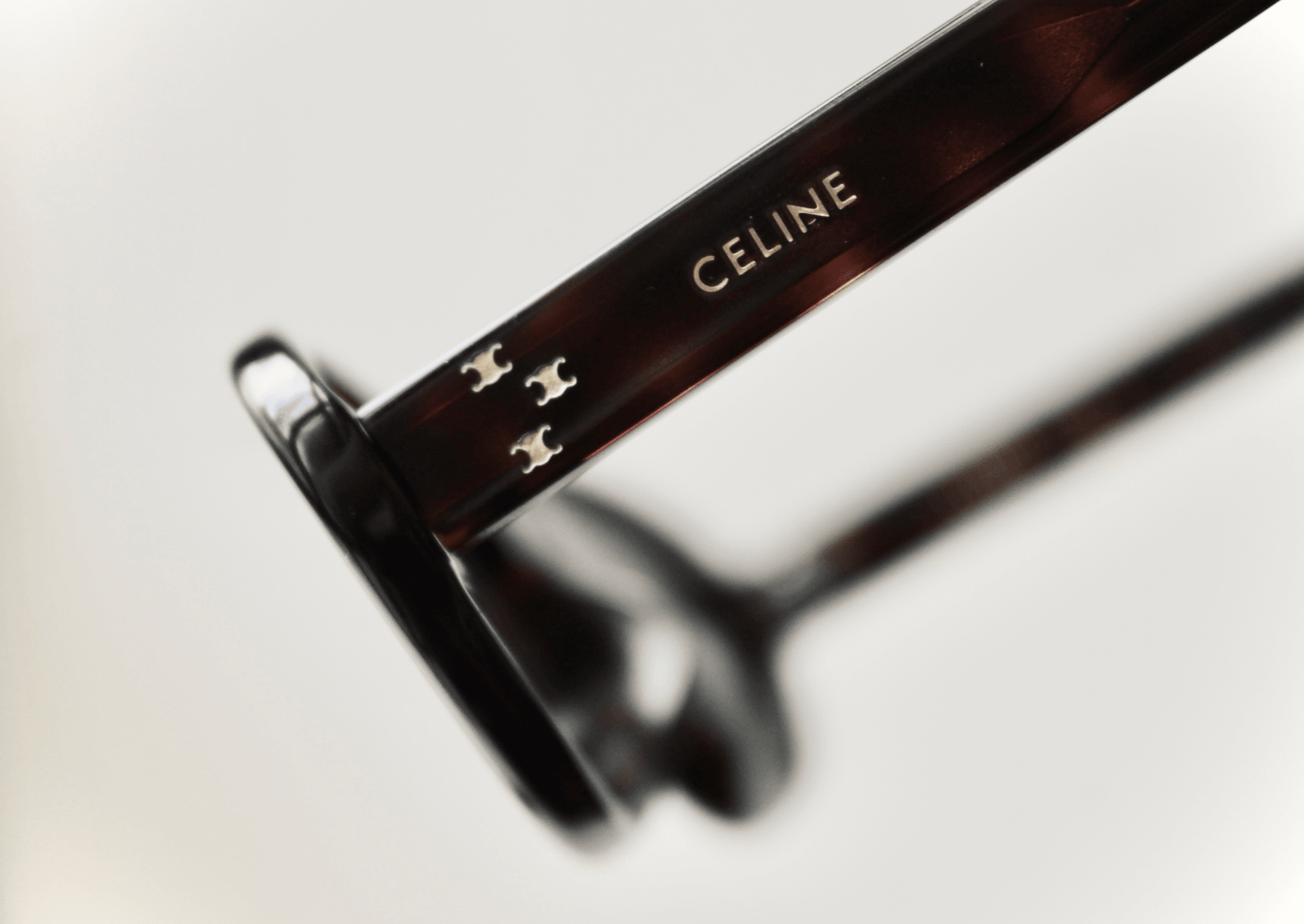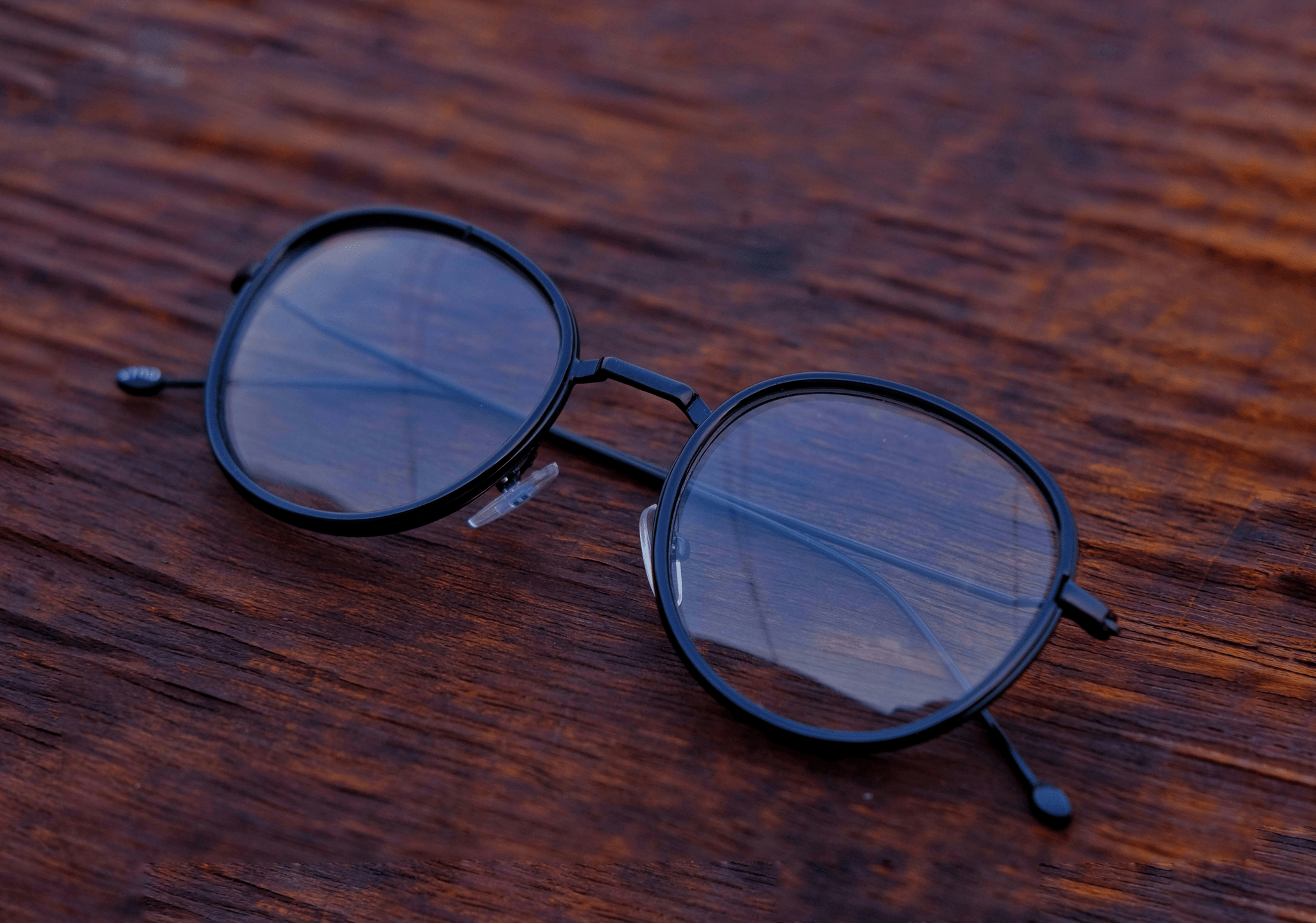Introduction

In a world where personal style meets sustainability, cellulose acetate frames are making waves as the eyewear of choice for fashion-forward individuals. With their stunning aesthetics and eco-friendly credentials, these frames are not just a trend but a lifestyle statement. So, what is cellulose acetate frames, and why should you consider them over traditional plastic options?
Discover the Allure of Cellulose Acetate Frames
Cellulose acetate frames captivate with their vibrant colors and intricate patterns, offering a unique flair that molded plastic simply can't match. Their luxurious look and feel elevate any outfit, whether you're dressing up for an event or keeping it casual. These frames are more than just accessories; they’re an expression of individuality that resonates with today’s style-savvy consumers.
Why Choose Acetate Over Plastic Frames
When debating acetate vs. molded plastic frames, it quickly becomes clear that cellulose acetate offers superior quality in both appearance and comfort. Unlike standard plastic, which can feel rigid and cheap, acetate provides flexibility without compromising on style or durability. Plus, many people wonder: is cellulose acetate better than plastic? The answer lies in its lightweight nature and ability to be customized, making it a favorite for those seeking both function and fashion.
The Rise of Sustainable Eyewear
As the conversation around sustainability grows louder, more brands are embracing eco-friendly materials like cellulose acetate to reduce their environmental footprint. The rise of sustainable eyewear means consumers now have choices that align with their values while still looking fabulous—who says you can’t have it all? With this shift towards greener options in fashion accessories, it's no surprise that many are asking: what are the disadvantages of cellulose acetate frames? Understanding both sides will help you make informed choices about your eyewear.
What is Cellulose Acetate Frames?

Cellulose acetate frames are a popular choice in the eyewear industry, known for their vibrant colors and unique patterns. Made from renewable resources, these frames offer an eco-friendly alternative to traditional plastic options. As consumers increasingly seek sustainable choices, understanding what cellulose acetate frames are becomes essential.
The Composition of Acetate Frames
Cellulose acetate is derived from natural cellulose found in plant materials, making it a biodegradable option compared to conventional plastics. This composition not only contributes to its lightweight feel but also allows for a wide range of colors and finishes. The process of creating cellulose acetate frames involves dissolving cellulose and then reforming it into sheets, which can be cut and shaped into stylish eyewear.
How They Differ from Traditional Plastic
When comparing cellulose acetate vs. molded plastic frames, the differences become quite clear. Cellulose acetate offers greater flexibility and comfort due to its unique composition, while traditional plastics can often feel rigid and less forgiving on the face. Additionally, cellulose acetate frames exhibit a level of craftsmanship that sets them apart; they can be polished to achieve a glossy finish that enhances their aesthetic appeal.
Popular Brands Embracing Cellulose Acetate
Many leading eyewear brands have embraced cellulose acetate as a primary material for their frame designs, showcasing its versatility and style potential. Brands like Ray-Ban, Warby Parker, and Oliver Peoples have introduced stunning collections featuring cellulose acetate frames that cater to various tastes and preferences. As these brands continue to innovate with this material, they highlight the growing trend towards sustainable fashion choices in eyewear.
Trends in Cellulose Acetate Frames

Cellulose acetate frames are making waves in the eyewear industry, and their trends reflect a vibrant blend of creativity and style. As more people seek unique and sustainable options, these frames have become synonymous with bold designs and eco-conscious choices. Let's dive into the latest trends that are shaping the future of cellulose acetate eyewear.
Vibrant Colors and Patterns
One of the most captivating aspects of cellulose acetate frames is their ability to showcase vibrant colors and intricate patterns. Unlike traditional plastic, which often sticks to basic hues, cellulose acetate allows for a kaleidoscope of designs that can be tailored to individual tastes. Whether you prefer an eye-catching tortoiseshell or a striking floral print, these frames offer endless possibilities for self-expression.
Retro and Modern Styles Coexisting
Another exciting trend in cellulose acetate frames is the harmonious coexistence of retro and modern styles. Designers are creatively merging vintage aesthetics with contemporary flair, resulting in unique eyewear pieces that cater to diverse preferences. From oversized cat-eye shapes reminiscent of classic Hollywood glamour to sleek minimalist designs appealing to modern sensibilities, there’s something for everyone.
This blending of styles has sparked renewed interest in questions like Are acetate frames better than plastic? when considering both fashion-forward looks and lasting quality. The charm of retro-inspired designs combined with modern materials makes cellulose acetate a go-to choice for those who appreciate timeless elegance without sacrificing durability or sustainability. It’s a perfect example of how innovation can breathe new life into traditional concepts.
Celebrity Endorsements
Celebrity endorsements have played a significant role in popularizing cellulose acetate frames among fashion enthusiasts everywhere. When A-listers showcase their stylish pairs on social media or red carpets, they set off trends that ripple through the industry faster than you can say “What are the disadvantages of cellulose acetate frames?” These high-profile advocates help demystify this material while highlighting its chic appeal.
With stars opting for stylish yet sustainable options like cellulose acetate over traditional molded plastic frames, fans often find themselves inspired by their favorite icons’ choices. This visibility not only elevates awareness about what makes these frames special but also encourages consumers to consider how they can incorporate similar styles into their own wardrobes—further fueling interest in sustainable eyewear solutions overall.
Benefits of Choosing Cellulose Acetate Frames

Lightweight and Comfortable Wear
One of the standout features of cellulose acetate frames is their lightweight nature, making them incredibly comfortable for prolonged use. Unlike traditional plastic options that can feel bulky or heavy on the face, these frames provide a snug fit without sacrificing comfort. This quality makes them perfect for anyone who wears glasses all day long—say goodbye to discomfort and hello to style!
Customizability for Unique Expressions
Cellulose acetate frames offer unparalleled customizability that allows wearers to express their individuality in ways molded plastic simply can't match. Whether you prefer bold colors or intricate patterns, acetate can be crafted into designs that reflect your personal style perfectly. At Daposi, we specialize in bringing your vision to life by transforming your creative ideas into stunning eyewear that stands out from the crowd.
Long-lasting Durability
Durability is another significant advantage when considering cellulose acetate frames over traditional plastic options. These frames are not only resistant to daily wear and tear but also maintain their shape over time—no more worrying about bent or broken glasses! Plus, when evaluating “Are acetate frames better than plastic?” it’s clear that their longevity makes them a smart investment for those who want eyewear that lasts.
Are Acetate Frames Better Than Plastic?

Analyzing Longevity and Performance
Cellulose acetate frames are renowned for their durability and resilience compared to standard plastic frames. Unlike traditional plastics that can become brittle over time, cellulose acetate maintains its integrity much longer, offering a stylish solution that lasts. When considering What are the disadvantages of cellulose acetate frames? one might point out that while they require some care, their superior longevity often outweighs any minor maintenance challenges.
In terms of performance, cellulose acetate frames provide a lightweight feel without sacrificing strength or flexibility. This makes them comfortable for all-day wear while ensuring they can withstand everyday use without easily succumbing to wear and tear. So when asking Are acetate frames better than plastic?, many users find that the answer leans toward yes due to these impressive qualities.
Environmental Impact of Acetate
With an increasing focus on sustainability in fashion, many consumers are curious about the environmental footprint of their choices: What is cellulose acetate frames? In essence, they are made from natural sources like wood pulp and cotton fibers, making them a more eco-friendly option compared to petroleum-based plastics used in standard eyewear production. The production process for cellulose acetate is generally less harmful to the environment as well.
Moreover, when comparing Acetate vs. Molded Plastic Frames, it becomes clear that choosing cellulose acetate contributes positively towards reducing plastic waste in landfills and oceans. Brands embracing sustainable practices often opt for this material because it aligns with eco-conscious values while still delivering quality products that look great on anyone's face!
Cost Considerations
When weighing your options between cellulose acetate frames and traditional plastic ones, cost is an important factor to consider as well. While it's true that premium-quality cellulose acetate frames may come with a higher price tag upfront compared to molded plastic options, it's essential to think long-term about value versus expense—especially regarding durability and style longevity.
Investing in quality eyewear like cellulose acetate means you’re less likely to need replacements frequently since they stand up better over time—saving you money down the road! So while some may ask “Are acetate frames better than plastic?” based on initial costs alone, savvy shoppers understand that investing wisely pays off with both style points and financial sense.
What are the Disadvantages of Cellulose Acetate Frames?

While cellulose acetate frames have become a popular choice for eyewear enthusiasts, it's essential to consider some potential drawbacks. Understanding What are the disadvantages of cellulose acetate frames? can help you make an informed decision. Although these frames offer many benefits, they also present challenges that might not suit everyone's lifestyle or preferences.
Potential Challenges in Maintenance
One of the notable disadvantages of cellulose acetate frames is their maintenance requirements. Unlike traditional plastic frames, which often require minimal care, cellulose acetate can be more sensitive to environmental factors such as heat and humidity. If you're wondering, Is cellulose acetate better than plastic? keep in mind that while it offers style and sustainability, it may need extra attention to avoid warping or discoloration over time.
Furthermore, regular cleaning is crucial for maintaining the luster and appearance of your cellulose acetate frames. They can attract dust and oils from your skin more readily than molded plastic options, necessitating frequent upkeep. If you prefer low-maintenance eyewear, this might be a point to ponder before making your choice.
Comparison with Molded Plastic Frames
When comparing acetate vs. molded plastic frames, it's important to recognize that each material has its own set of advantages and disadvantages. Molded plastic frames tend to be more durable against everyday wear and tear compared to their cellulose acetate counterparts. However, they often lack the unique aesthetics and customizable features that make cellulose acetate so appealing.
In terms of flexibility and comfort during long wear sessions, molded plastic might have an edge due to its sturdier nature; however, many users find that well-made cellulose acetate frames provide excellent comfort too—if properly maintained! So if you're still asking yourself Are acetate frames better than plastic? consider what aspects matter most: durability or design?
The Balance of Style and Functionality
The allure of cellulose acetate frames lies in their stylish designs and vibrant colors; however, this beauty sometimes comes at the cost of functionality. It's essential to strike a balance between aesthetics and practicality when choosing eyewear—especially if you lead an active lifestyle or work in challenging environments where damage is a concern. While some may prioritize style over function when selecting their glasses, others may find themselves compromising on durability with delicate materials like cellulose acetate.
Ultimately, understanding how What is cellulose acetate frames? translates into real-world use will help you assess whether they fit your needs perfectly or if another option might serve you better in terms of everyday reliability without sacrificing style.
Conclusion

As we wrap up our exploration of cellulose acetate frames, it’s clear that these modern eyewear options are more than just a trend; they represent a significant shift in how we view style and sustainability. With their vibrant colors, unique designs, and eco-friendly materials, cellulose acetate frames are transforming the eyewear landscape. So why not embrace this modernity and make a statement with your next pair of glasses?
Embrace the Modernity of Acetate Frames
The allure of cellulose acetate frames lies in their ability to blend fashion with functionality. Unlike traditional plastic options, these frames boast a rich history rooted in innovation and sustainability, making them an excellent choice for the environmentally conscious consumer. By choosing cellulose acetate over plastic, you’re not just opting for style; you’re also supporting a movement towards more sustainable practices in fashion.
Key Considerations for Choosing Frames
When selecting your next pair of frames, consider factors such as comfort, durability, and environmental impact—questions like What is cellulose acetate frames? or Are acetate frames better than plastic? should guide your decision-making process. It's essential to weigh the advantages against potential disadvantages: while cellulose acetate offers many benefits like lightweight wearability and customizability, it's important to ask yourself What are the disadvantages of cellulose acetate frames? Understanding both sides will help you make an informed choice that fits your lifestyle.
Why Daposi is Your Go-To for Customization
At Daposi, we believe that your eyewear should reflect who you are—bringing your vision to life goes beyond just aesthetics! Our commitment to customization allows you to express your unique style through innovative designs crafted from high-quality materials like cellulose acetate frames. With our expertise in transforming creative concepts into stunning physical objects and our dedication to sustainability, choosing Daposi means you're not only getting stylish eyewear but also supporting eco-friendly practices.
